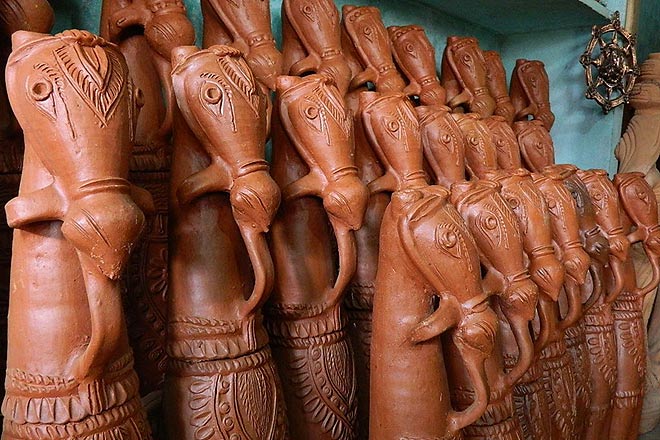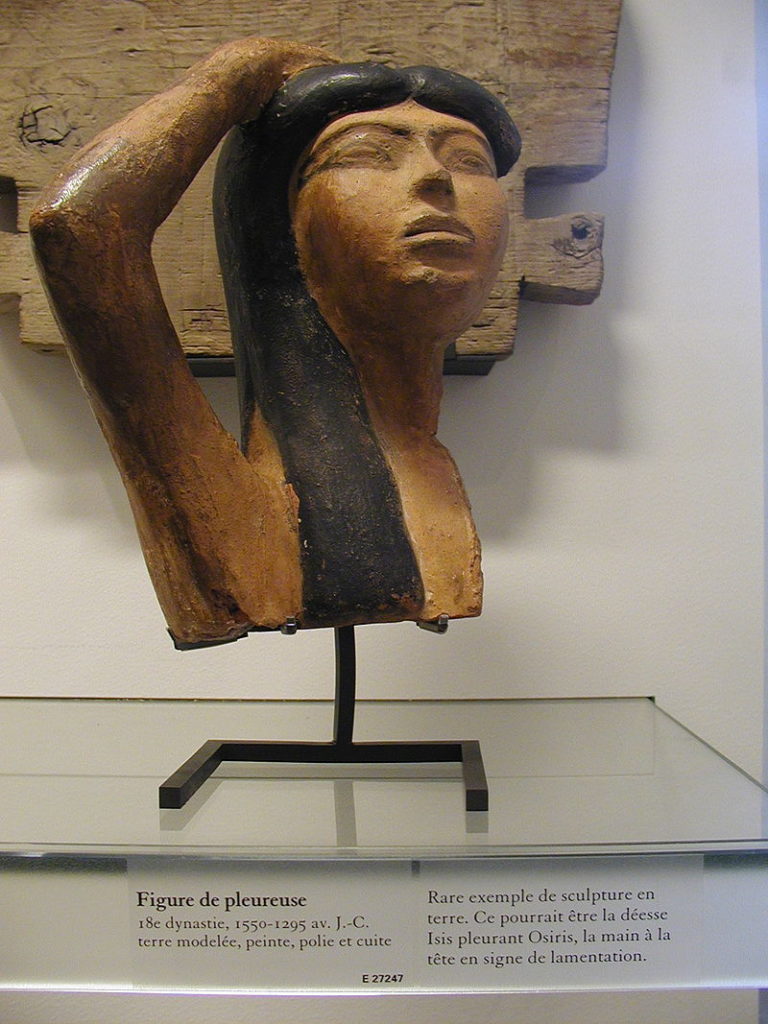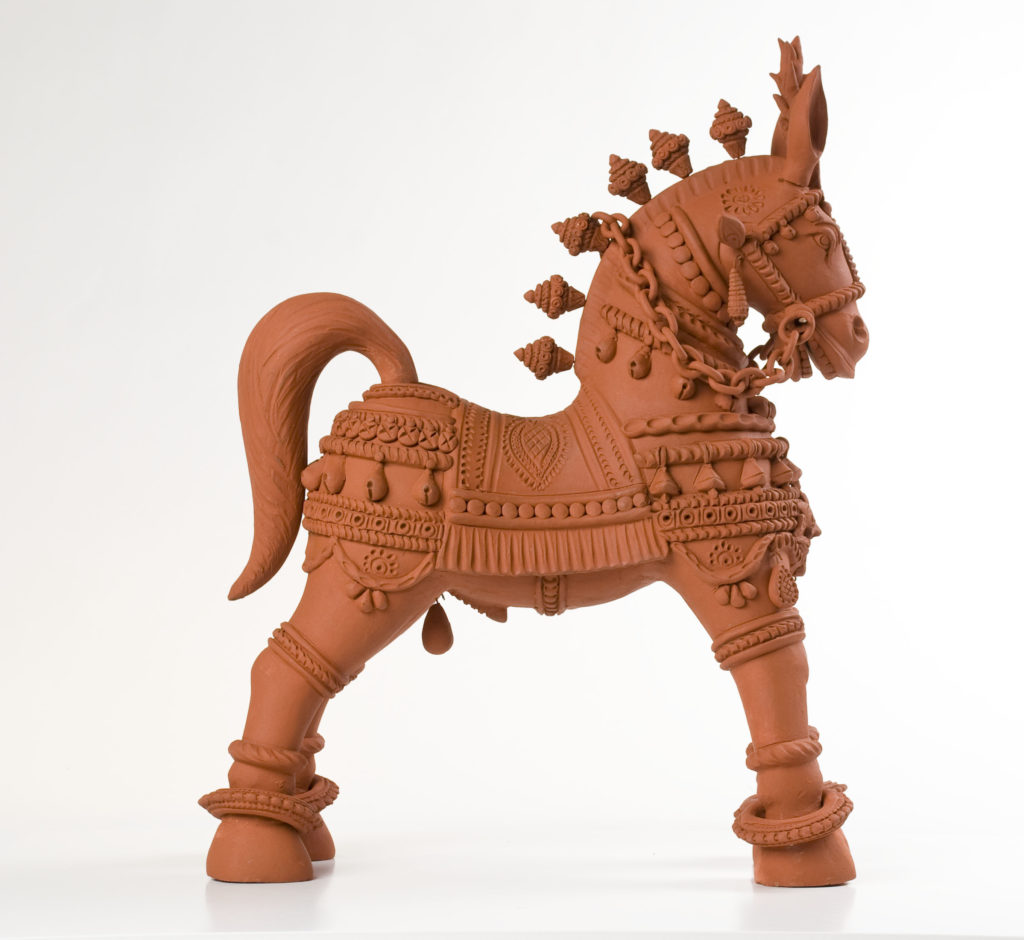Terracotta Tales
Terracotta has been a central ornamental and constructional material throughout India ever since the inception of the earliest civilisations. The multifaceted use of terracotta has declared it as a traditional art form reflective of the Indian culture and heritage.
Terracotta figurines, ornaments, toys, bricks, pottery were abundantly unearthed during various excavations at Mohenjodaro and Harappa.
Terracotta is a type of earthenware that is clay-based and is either glazed or unglazed. It comes from the Latin terra cocta and implies baked earth in Italian. Though it is typically of a brownish-red tinge, the colour depends on the type of clay and the method of baking it.
Terracotta, history, art and culture
Historically, terracotta also had a commercial relevance as terracotta seals were used by merchants for trade activities. These seals treated as artifacts served as crucial historical evidence of the period to which they belonged.
Artistically too terracotta has immense significance across various cultures. In Egypt, terracotta house models dating back to 1900 BC have been excavated. These models were part of the burials of poor people and usually were replicas of their dwellings. The Mesopotamian civilization also boasted of beautiful terracotta figurines of goddesses and small statues. Bell Idols and female statuettes having mobile legs from the 8th century BC Greece also sheds light on the rich history of terracotta. Culturally, the terracotta bell idols were also popular in Rome.
China has an ancient link with terracotta. The Terracotta Army of China from 210 BC, part of an ancient necropolis was patronised by the emperor Qin Shi Huang. The King’s terracotta army consists of 6,000 life-sized terracotta warriors guarding his tomb. The army is complete with soldiers, archers, horses, and chariots. Each of the warriors has distinct facial features making the art even more intricate in nature.
India and terracotta
India has had an integral connection with terracotta declaring it as an inherent part of its rich culture and heritage. Though terracotta is an ancient art form that is practiced in India, it is arguably facing a steady decline.
“The young generation is very indifferent towards carrying forward this craft. They don’t want their hands to be caked with sticky clay or work hard at such a level,” said Mahadev Paul, a senior artisan who specialises in making idols of Lord Ganesh. “The people of our community are blessed with these skills, but my son and the children of most of the artisans here are unwilling to carry forward this centuries-old legacy”. Mahadev Paul is a native of Asarikandi village of Dhubri district in Assam, famous for its terracotta sculptures worldwide. The Asarikandi village terracotta artisans are facing a challenge- of industrialisation and generation gap. Even though their terracotta business has been doing fairly well, they are not finding takers of the art amongst their successors, hence “the tradition is dying, a slow death.”
Meanwhile, rural areas of West Bengal are acclaimed for carefully crafted terracotta pots, figurines including those of handsome horses and other items, small and large, practical as well as decorative. Some of the well-known towns for Terracotta art form are Murshidabad, Jessore, Birbhum, Bankura, and Hooghly. The art form came to this state in the 16th century under the influence of Vaishnavite movement which found expression in terracotta sculpting on Krishna temples built by them. Bengal terracotta jewellery has also lived up to the hype.
One of the most prominent terracotta architectural prototypes of Bengal is the terracotta temples of Bishnupur. The walls of the temple are carved with elaborate details on terracotta depicting scenes out of the Mahabharata or Ramayana or sometimes even the holy Puranas.

An intricate wall pattern on the ancient terracotta Gopallaxmi Janardhan Temple at Ghurisha, West Bengal Photo: Srimita Mukherjee
Terracotta also enjoys equal popularity across Odisha, Rajasthan, Haryana, Tamil Nadu, Bihar among other regions. Terracotta art in Odisha, for example, is especially propagated by tribal artisans recognised for their penchant for jewellery and pottery made out of the burnt clay.

Yet another culturally significant terracotta temple in Birbhum, West Bengal















